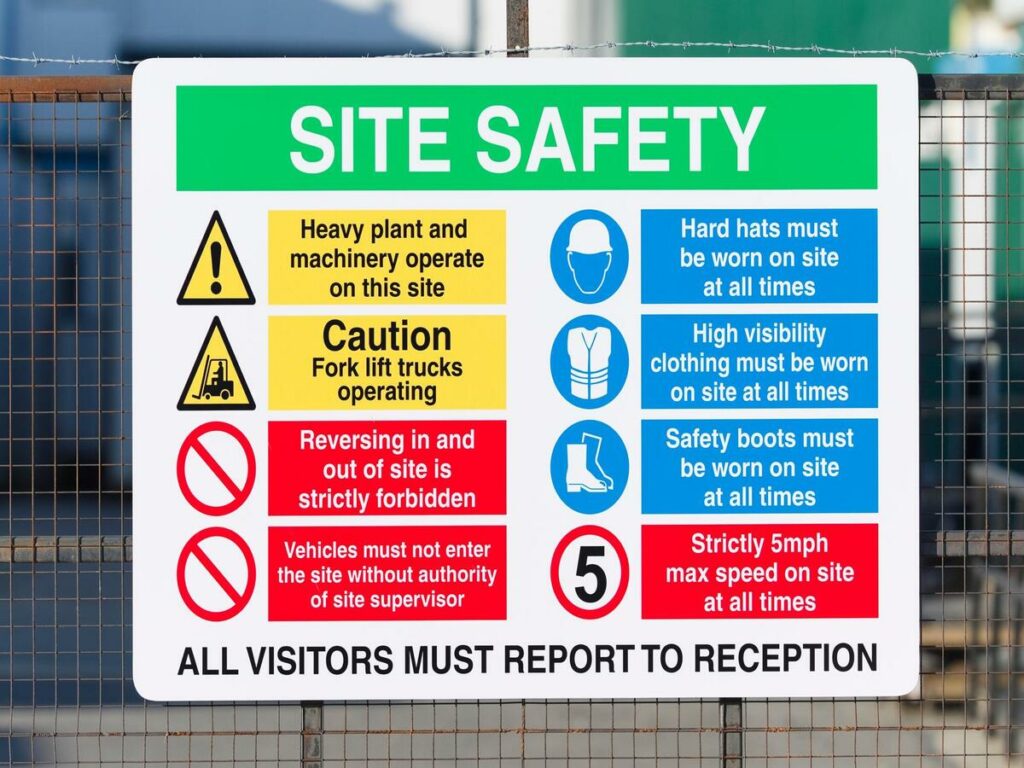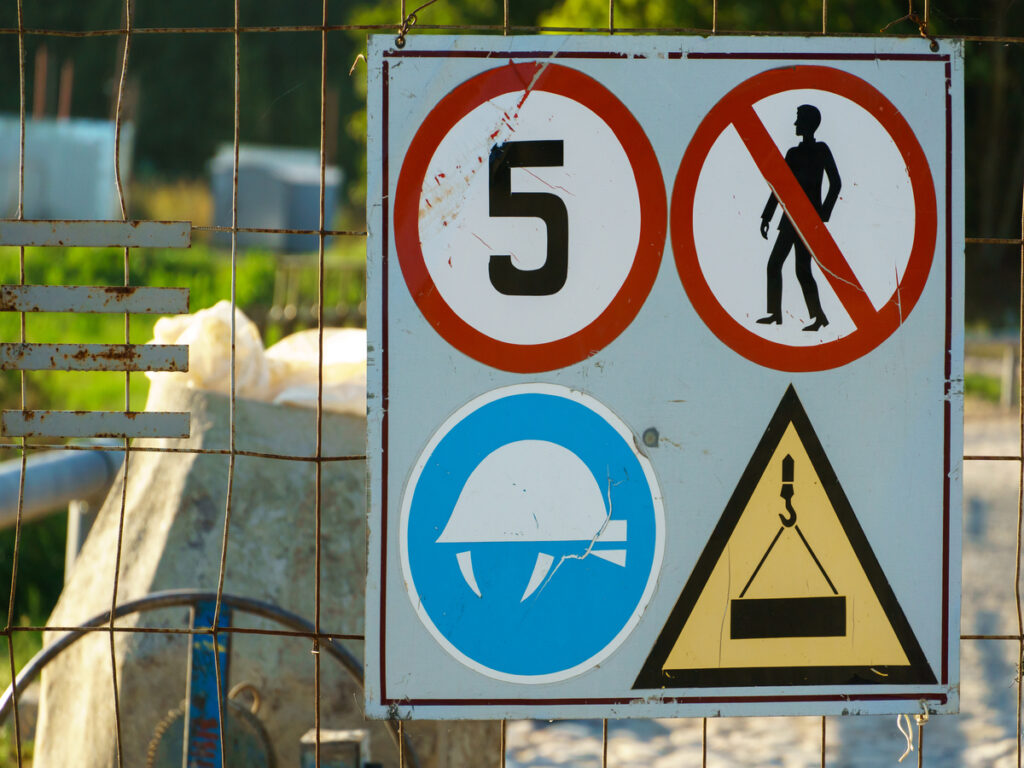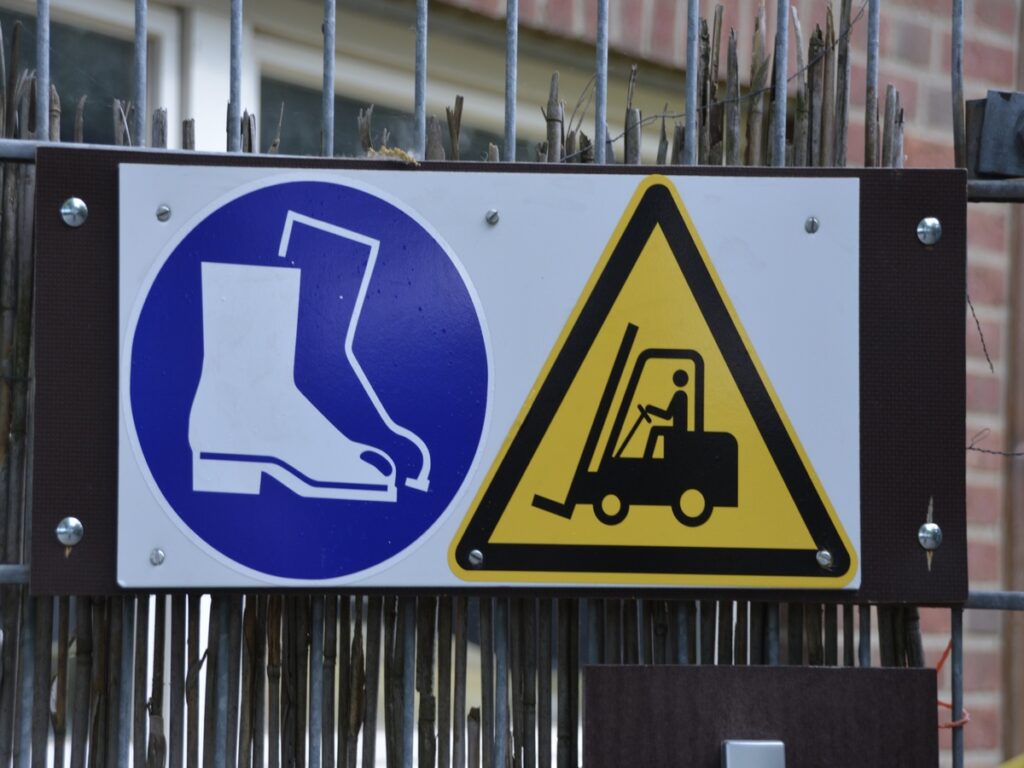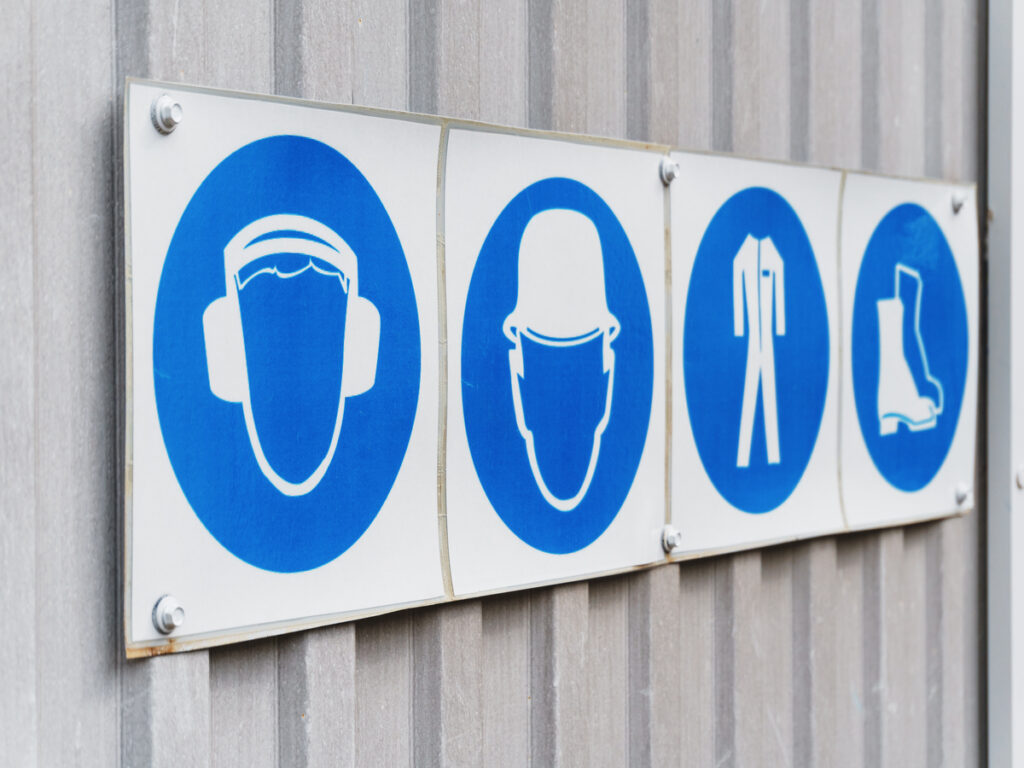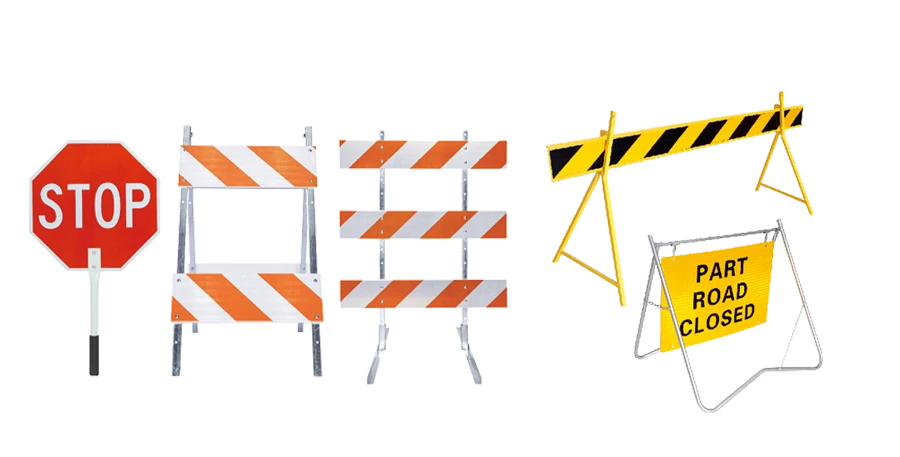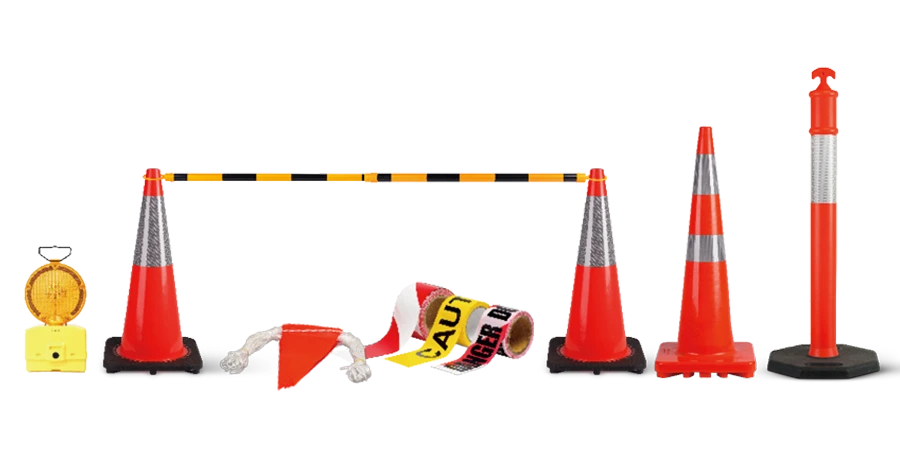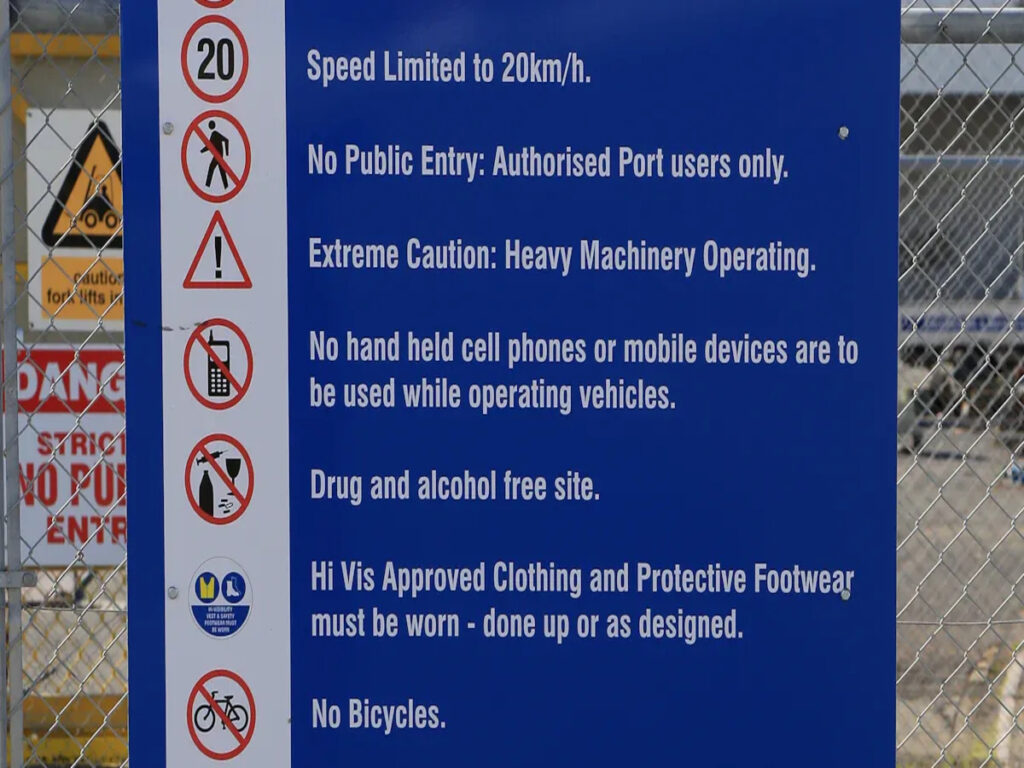
GHS 위험 기호를 사용하여 직장을 안전하게 유지하는 데 도움이됩니다.. 이러한 안전 징후와 상징은 각 위험에 대해 경고합니다.. 그들은 화학 라벨과 안전 데이터 시트에 있습니다. 이것은 위험을 빨리 볼 수 있도록 도와줍니다. 호주와 다른 국가에서, 안전 징후 및 기호는 엄격한 안전 규칙을 준수하는 데 도움이됩니다.. 위험 기호를 알면 팀과 환경을 안전하게 유지합니다.. 또한 매일 올바른 안전 표시와 기호를 사용합니다..
Optraffic은 다양한 GHS 준수를 제공합니다 안전 징후 작업장 안전을 보장하도록 설계된 위험 기호. 우리의 표지판은 지역 및 국제 규정을 충족하도록 만들어졌습니다., 팀과 환경을 보호하면서 준수하는 데 도움이됩니다.. 안전하고 효율적인 작업장을 유지하기 위해 오늘날의 안전 범위를 탐색하십시오..
GHS 위험 기호 개요
GHS 위험 기호는 무엇입니까??
당신은 알 수 있습니다 GHS 위험 기호 매일 화학 라벨에. 그들은 또한 안전 데이터 시트에 있습니다. 유엔은 전 세계적으로 조화를 이루는 시스템을 만들었습니다. 화학적 위험에 대해 빠르게 아는 데 도움이됩니다. 9 개의 주요 사진이 있습니다. 각각은 빨간 다이아몬드 모양 안에 있습니다. 각 그림은 다른 위험 유형을 보여줍니다. 이 기호는 컨테이너 및 작업장 표지판에 있습니다. 그들은 또한 운송 라벨에 있습니다. 상징은 가연성이나 독성과 같은 위험에 대해 경고합니다.. 일부 상징은 환경에 대한 피해에 대해 경고합니다.
GHS 위험 기호는 단순한 그림 이상입니다. 그들은 신호 단어와 위험 진술과 함께 제공됩니다. 또한 안전을 유지하는 방법에 대한 조언도받습니다. 이 기호는 오래된 국가 시스템을 대체했습니다. 지금, 호주 나 어느 나라에서도 같은 경고를받습니다.. 명확하고 빠른 정보를 위해이 기호를 신뢰할 수 있습니다..
GHS 위험 기호를 사용하여 화학 물질을 처리하기 전에 위험을 발견합니다.. 그들은 당신이 올바른 개인 보호 장비를 선택하는 데 도움이됩니다. 또한 안전한 작업 규칙을 따르는 데 도움이됩니다. 상징이 보일 때, 당신은 위험 유형을 알고 있습니다. 레이블의 언어를 읽을 필요는 없습니다.
표준화가 중요한 이유
표준화는 직장을 더 안전하게 만듭니다. 모든 사람이 동일한 GHS 위험 기호를 사용하는 경우, 혼란이 적습니다. 당신과 당신의 팀은 위험을 빨리 발견 할 수 있습니다. 이것은 비상 사태에서 매우 중요합니다. 전 세계적으로 조화 된 시스템은 라벨 및 안전 데이터 시트에 대한 한 가지 규칙 세트를 제공합니다..
- 표준화 된 상징은 다른 언어를 사용하는 사람들을 돕습니다.
- 화학적 위험에 대해 빠른 경고를받습니다.
- 모든 사람이 동일한 상징을 배우기 때문에 훈련이 더 쉽습니다.
- 실수를 줄이고 사고는 덜 발생합니다.
| 이전 시스템 요소 | GHS 시스템 요소 |
|---|---|
| MSD | SDS (안전 데이터 시트) |
| 위험 문구 | 위험 진술 |
| 안전 문구 | 예방 적 진술 |
| DG 클래스 레이블 | GHS Pictograms |
| N/A | 새로운 건강 영향 상징 |
이제 오래된 표지판 대신 GHS 위험 기호를 사용합니다.. 이 변화는 호주 및 기타 국가의 안전법을 준수하는 데 도움이됩니다.. 당신은 자신을 지키고 있습니다, 당신의 팀, 화학 위험에 대한 이러한 명확한 규칙을 사용하여 안전한 환경.
9 개의 GHS 사진
당신은 알 수 있습니다 GHS Pictograms 매일 직장에서. 이 기호는 화학적 위험을 빠르게 발견하는 데 도움이됩니다. 각각은 다른 위험 유형을 보여줍니다. 세 가지 주요 그룹이 있습니다: 건강, 물리적, 및 환경 위험. 이 그룹을 아는 것은 안전을 유지하고 규칙을 따르는 데 도움이됩니다..
GHS Pictograms는 명확한 경고를 제공합니다. 라벨에서 찾을 수 있습니다, 안전 데이터 시트, 그리고 표지판. 그들은 당신이 당신에게주의해서 화학 물질을 다루고 사고를 피하도록 상기시켜줍니다..
건강 위험
건강 위험에 대해 경고 한 GHS Pictogram을 아는 것이 중요합니다.. 이 기호는 화학 물질이 몸을 다치게 할 때 보여줍니다.. 일부 화학 물질은 단기 문제를 일으 킵니다. 다른 사람들은 오랫동안 당신을 해칠 수 있습니다. 다음은 주요 건강 위험 사진이 있습니다:
| 상 | 위험 유형 | 그것이 의미하는 바 |
|---|---|---|
| 건강 위험 | 만성 건강 위험 | 암을 유발할 수 있습니다, 호흡 문제, 선천적 결함, 또는 장기 손상 |
| 느낌표 | 급성 건강 위험 | 피부 나 눈 자극을 유발합니다, 호흡 문제, 아니면 졸리거나 어지러움을 느끼게합니다 |
| 두개골과 크로스 본 | 심한 독성 | 매우 독성 화학 물질; 삼키면 사망을 유발할 수 있습니다, 흡입, 또는 흡수 |
| 신랄한 | 피부/눈에 부식성 | 피부와 눈에 화상을 유발합니다; 금속을 손상시킬 수도 있습니다 |
건강 위험 기호는 화학 물질이 당신을 매우 아프게 할 수 있음을 의미합니다.. 느낌표는 발진이나 현기증과 같은 것에 대해 경고합니다.. 두개골과 크로스 본은 매우 위험한 독을 보여줍니다. 부식성 기호는 화상과 눈 손상을 조심하라고 지시합니다..
물리적 위험
물리적 위험 사진은 재산이나 사람에 대한 위험에 대해 경고합니다.. 이 상징은 화상을 입을 수있는 것을 발견하는 데 도움이됩니다, 터지다, 또는 다른 문제를 일으킨다. 다음은 주요 물리적 위험 사진입니다:
| 상 | 위험 유형 | 그것이 의미하는 바 |
|---|---|---|
| 불꽃 | 가연성 위험 | 가연성 물질; 쉽게 불을 붙일 수 있습니다 |
| 폭발 폭탄 | 폭발성 위험 | 폭발 할 수있는 폭발물 또는 화학 물질 |
| 원 위에 불꽃 | 산화 위험 | 화재를 일으키는 화학 물질은 더 빨리 타거나 화재를 일으킨다 |
| 가스 실린더 | 압력 아래 가스 | 압력하에 저장된 가스; 폭발하거나 누출 될 수 있습니다 |
| 신랄한 | 금속에 부식성 | 금속과 용기 손상 |
이 사진은 화재를 시작하거나 폭발 할 수있는 화학 물질을 발견하는 데 도움이됩니다.. 불꽃은 무언가가 불을 붙일 수 있음을 의미합니다. 폭발 폭탄은 폭발의 위험을 보여줍니다. 원 위의 불꽃은 화학 물질이 화재를 악화시킬 수 있음을 의미합니다.. 가스 실린더는 신중한 보관이 필요한 가스에 대해 경고합니다.. 부식성 기호는 또한 일부 화학 물질이 금속을 손상시킬 수 있음을 의미합니다..
환경 위험
환경 위험 사진은 자연을 상하게 할 수있는 화학 물질에 대해 경고합니다.. 환경에 좋지 않은 화학 물질에 이러한 상징이 보입니다.. 그들은 당신이 물을 보호하는 데 도움이됩니다, 토양, 그리고 피해를 입은 동물.
| 상 | 위험 유형 | 그것이 의미하는 바 |
|---|---|---|
| 환경 (물고기/나무) | 환경 위험 | 수생 생활과 환경에 유해합니다 |
이 상징은 강과 호수를 오염시킬 수있는 화학 물질을 발견하는 데 도움이됩니다.. 이 화학 물질을 사용할 때 조심해야합니다.. 이와 같은 GHS 사진은 오염을 막는 데 도움이됩니다. 당신은 이러한 경고를 따라 자연을 안전하게 지키고 있습니다.
GHS Pictograms는 위험을 빨리 볼 수 있도록 도와줍니다. 사고를 중단하고 모든 사람을 안전하게 지키기 위해 빨리 행동 할 수 있습니다..
이 사진을 사용하여 각 화학 물질의 위험을 알 수 있습니다.. 각 기호는 무엇이 잘못 될 수 있는지에 대한 빠른 경고를 제공합니다.. 당신은 자신을 지키고 있습니다, 당신의 팀, 그리고 각 상징이 무엇을 의미하는지 배우고 안전 단계를 수행함으로써 안전한 환경.
직장의 안전 징후 및 상징
명확한 의사 소통
당신은 매일 직장에서 안전 징후와 상징을 볼 수 있습니다.. 이 사진은 위험을 빠르게 알 수 있도록 도와줍니다. GHS Pictograms는 모든 사람이 이해할 수있는 상징을 사용합니다. 위험을 알기 위해 긴 레이블을 읽을 필요가 없습니다.. 빨간 다이아몬드 모양은 쉽게 찾을 수 있습니다. 이 시스템은 혼란을 멈 춥니 다, 사람들이 다른 언어를 사용하더라도. 안전 징후와 기호는 빠른 정보를 제공합니다. 위험 유형을보고 무엇을 해야할지 알 수 있습니다.. "위험"또는 "경고"와 같은 신호 단어는 물건을 더욱 명확하게 만듭니다.. 또한 경고가 표시됩니다, 필수적인, 그리고 비상 표지판. 각각 고유 한 색상과 모양이 있습니다. 이 안전 기호는 실수를 멈추고 안전하게 유지하는 데 도움이됩니다..
안전 징후와 상징은 모든 사람이 위험을 이해하는 데 도움이됩니다. 빠른 경고를 받으면 빨리 행동 할 수 있습니다.
노동자 인식
안전 징후와 기호를 볼 때, 당신은 더 많은주의를 기울입니다. 연구에 따르면 GHS Pictogram이 더 안전하다는 것을 알고있는 근로자가 나타납니다. 당신은 불이나 독과 같은 것들에 대한 상징을 발견하는 법을 배웁니다.. 이것은 사고를 피하고 모든 사람을 안전하게 유지하는 데 도움이됩니다. 안전 징후 및 기호는 보호 장비를 착용하도록 상기시킵니다.. 그들은 출구와 응급 처치를 찾을 수있는 곳을 보여줍니다.. 이러한 상징을 보는 것은 종종 안전한 습관을 기억하는 데 도움이됩니다.
- 안전 징후 및 상징:
- 위험에 대해 경고하고 안전한 행동을 보여줍니다.
- 건강을 볼 수 있도록 도와줍니다, 물리적, 환경 위험.
- 모든 위험을 모르는 근로자에게 상기시킵니다.
훈련 및 안전 문화
안전 징후와 상징에 대해 배우면 직장을 더 안전하게 만듭니다.. GHS Pictograms를 공부할 때, 화학적 위험을 더 잘 이해합니다. 이 상징으로 훈련하는 것은 그들이 의미하는 바를 기억하는 데 도움이됩니다.. 장갑을 언제 사용 해야하는지 알고 있습니다, 고글, 또는 다른 장비. 리프레셔 훈련은 최신 상태를 유지합니다. 위험을보고하거나 질문하는 것에 대해 더 확신합니다.. 공개적으로 말하면 모든 사람에게 더 안전한 일을합니다.
훈련에서 안전 징후와 상징을 사용하여 사고를 낮추고 강력한 안전 문화를 구축합니다..
테이블은 다양한 안전 기호가 어떻게 작동하는지 보여줄 수 있습니다.:
| 상징의 유형 | 목적 | 예제 사용 |
|---|---|---|
| GHS Pictograms | 화학적 위험을 보여줍니다 | 화학 저장 영역 |
| 경고 신호 | 위험에 대해 경고합니다 | 미끄러운 바닥 |
| 필수 표시 | 무엇을 해야하는지 알려주세요 | 눈 보호를 착용하십시오 |
| 비상 표지판 | 출구 또는 응급 처치를 보여줍니다 | 화재 출구, 응급 처치 키트 |
모든 안전 기호를 알고 사용하여 직장을 안전하게 유지합니다.. 안전 징후와 기호는 위험에 대한 첫 방어입니다..
GHS 위험 기호 및 준수
호주 규정
호주에서는, 엄격한 화학 안전 규칙을 따라야합니다. 작업 건강 및 안전법에 따르면 모든 화학 라벨에 GHS 위험 기호가 필요하다고 말합니다.. 이 기호는 국가 안전 표준을 충족시키는 데 도움이됩니다. 흰색 배경에 빨간 다이아몬드 안에 검은 그림으로 보입니다.. 각 기호는 특정 위험을 나타냅니다, 가연성 또는 독성 화학 물질처럼.
위험물을 표시 할 때, 당신은 포함해야합니다:
- GHS 위험 사진
- "위험"또는 "경고"와 같은 신호 단어
- 위험 진술
- 예방 적 진술
- 제조업체 정보
일부 제품, 작은 알코올이나 의약품처럼, 이 레이블이 필요하지 않습니다. 많은 위험물을 저장하는 경우, 대담한 빨간 글쓰기로 Hazchem 플래 카드를 보여 주어야합니다. 운송을 위해, 호주 위험물 코드 픽토그램을 사용할 수 있습니다. GHS 기호와 동일한 위험과 일치해야합니다..
안전한 작업 호주는 모델 작업 건강 및 안전 법률 및 실무 규범을 만듭니다.. 각 주와 영토는이 규칙을 준수하는지 확인합니다.. 당신은 분류해야합니다, 상표, 작업중인 모든 화학 물질에 대한 안전 데이터 시트를 제공합니다.. 이 시스템은 작업장을 안전하게 유지하고 혼란을 멈 춥니 다.
법적 및 안전 혜택
GHS 규칙을 따르는 경우, 당신은 강력한 법적 보호와 더 나은 안전을 얻습니다. 올바른 화학적 라벨과 위험 기호를 사용하여 벌금과 법적 문제의 위험을 줄입니다.. 또한 모든 사람에게 직장을 더 안전하게 만듭니다.
| 법적 이익 | 설명 |
|---|---|
| 조화 된 WHS 법률 준수 | 호주 전역의 국가 안전법을 따릅니다. |
| 법적 위험 감소 | 화학 관리 가난한 처벌과 법적 문제를 피합니다.. |
| 표준화 된 위험 통신 | 당신은 어디서나 같은 기호를 사용합니다, 따라서 규칙을 따르기 쉽습니다. |
| 실무 코드와 정렬 | 화학 안전에 대한 규제 기관이 승인 한 안내서를 따릅니다. |
| 규제 부담의 완화 | 모든 위험물에 하나의 시스템을 사용하여 시간과 노력을 절약합니다.. |
GHS 위험 기호를 사용할 때, 직장의 모든 사람은 화학적 위험을 빠르게 발견 할 수 있습니다. Clear Chemical Labels 및 Safety Sign은 사고를 중단하고 팀을 건강하게 유지하는 데 도움이됩니다.. 또한 부상을 피함으로써 돈을 절약합니다, 근무 시간을 잃었습니다, 그리고 보상 청구. 호주의 많은 산업, 광업처럼, 조작, 그리고 운송, 이 규칙을 사용하여 근로자와 환경을 안전하게 유지하십시오.. GHS에 따라, 또한 다른 나라와 위험물을 더 쉽게 거래 할 수 있도록합니다., 모든 사람이 동일한 안전 시스템을 사용하기 때문입니다.
좋은 안전은 명확한 위험 기호로 시작합니다. 당신은 당신의 팀을 보호합니다, 당신의 사업, 그리고이 규칙에 따라 환경.
GHS 위험 기호를 알면 직장을 더 안전하게 만듭니다.. 이 기호는 위험을 빠르게 볼 수 있도록 도와줍니다. 안전은 매일하는 일의 일부가됩니다.
| 혜택 영역 | 안전에 대한 장기적인 영향 |
|---|---|
| 사업 | 더 적은 사고, 규칙을 따르는 것이 더 쉽습니다, 돈을 절약하십시오 |
| 노동자 | 위험에 대해 더 많이 알고 있습니다, 덜 상처를 입으십시오 |
| 환경 | 화학 물질을 안전하게 처리하십시오, 덜 오염 |
당신은 조심스럽게 유지하여 안전한 직장을 구축하는 데 도움이됩니다. 새로운 안전 규칙을 배우고 전문가에게 도움을 요청합니다..
FAQ
GHS 위험 기호를 보면 어떻게합니까??
안전 데이터 시트를 중지하고 확인해야합니다 (SDS) 그 화학 물질을 위해. SDS는 각 기호를 설명하고 어떤 단계를 수행 해야하는지 알려줍니다.. 확실하지 않은지 항상 상사에게 물어보십시오.
GHS 위험 기호를 이해하려면 특별 교육이 필요합니까??
고급 교육이 필요하지 않습니다. 대부분의 작업장은 기본 안전 교육을 제공합니다. 각 상징의 의미와 안전을 유지하는 방법을 배웁니다.. 리프레셔 코스는 상징을 기억하는 데 도움이됩니다.
직장에서 GHS 위험 기호는 어디에서 찾을 수 있습니까??
화학 용기에는 GHS 위험 기호가 표시됩니다, 저장 공간, 그리고 안전 데이터 시트. 또한 유해 물질 근처의 경고 표시에서도 찾을 수 있습니다.. 이 기호는 위험을 빨리 발견하는 데 도움이됩니다.
기존 화학 라벨을 GHS 기호로 업데이트 해야하는 이유?
현재 안전법을 준수하려면 이전 레이블을 업데이트해야합니다.. GHS 기호는 당신에게 명확하게 제공합니다, 표준 경고. 이것은 직장의 모든 사람들이 위험을 이해하고 안전하게 지내도록 도와줍니다..


